Wibongpokpo Falls (위봉폭포)
2024-04-07
Daeheung-ri, Wanju-gun, Jeonbuk-do
+82-63-290-3930
Located in the eastern section of Wibongsanseong Fortress, Wibongpokpo Falls is a two-tiered waterfall measuring 60 meters high. The strangely-shaped rocks and thick groves of trees that border the cascading falls make for such a magical scene that it comes as no surprise that the waterfall has long since been counted as one of the Eight Scenic Sights of Wansan. Attractions located nearby include a battlefield from the Imjin War (1592-1598), Songgwangsa Temple, Dongsang Reservoir, Daea Reservoir, and Hwasim Hot Springs.
Wanju Songgwangsa Temple (송광사(완주))
2024-04-07
255-16, Songgwangsuman-ro, Wanju-gun, Jeonbuk-do
+82-63-243-8091
Songgwangsa Temple in Wanju-gun, Jeollabuk-do has a unique history that spans a period of over a thousand years. For many years the temple lay incomplete until Monk Bojo Chejing began reconstruction in the 7th year of King Gyeongmun of Silla (AD 867). The temple was destroyed at one point in time, but Master Monk Jinul prayed that it be rebuilt. In accordance with his fervent hopes, in the 1600s the monk’s followers rebuilt a number of the temple’s halls and buildings, many of which can still be seen today. The temple is also remembered as the temple that King Injo helped rebuild with the hope that his two sons, who had been taken hostage by the Qing dynasty during the Byeongjahoran War (Chinese invasion of Korea in 1636), would be returned safely and that Buddha would heal the nation.
One of the Korea’s four major temples, Songgwangsa is home to Jijangbosal and Siwangsang statues (found in Jijangjeon Hall), a Seokgayeorae statue, and 500 Nahansang statues (found in Nahanjeon Hall). The temple is also home to eight Tangible Cultural Assets and four Treasured Cultural Assets: Daeungjeon Hall, the Samsebulsang statues, the bell-tower, and the Sacheonwangsang statue.
Beloved for its historical significance as well as its beauty, the temple draws throngs of worshipers throughout the year. In spring, many tourists flock to the area to explore the temple and walk through the nearby cherry blossom tunnels. A worthwhile attraction for visitors of all ages, the temple is particularly well-suited for those with mobility problems since it is located on ground level.
Gudam Village (구담마을)
2024-04-07
49, Cheondam 1-gil, Imsil-gun, Jeonbuk-do
+82-63-644-9051
Located at the beginning of the Seomjingang River, the steep banks in Gudam Village are covered in maehwa (plum blossoms) in white and red. While strolling along the 3-kilometer-long path of the riverside that connects Gudam Village to Cheondam Village, tourists will be impressed by the beautiful scene created by the plum and cherry blossoms. The village became more and more famous thanks to its cozy ambience created by the Seomjingang River, plum blossoms and Zelkova at the mouth of the village, attracting visitors to enjoy a walking trip. The village has also served as a filming location for movies, including the film "Spring in My Hometown (1998)."
Taekwondowon Observatory (태권도공원 전망대)
2024-04-07
1482, Museol-ro, Muju-gun, Jeonbuk-do
+82-63-320-0114
Taekwondowon located in Muju-gun, Jeollabuk-do, serves as a main center for the 60 million taekwondo practitioners in 182 countries worldwide. Covering an area of 2.31 million square meters, the park combines the traditional and modern style in their buildings.
Uniram Baniramgyegok Valley (운일암 반일암 계곡)
2025-01-10
1926, Dongsangjucheon-ro, Jucheon-myeon, Jinan-gun, Jeonbuk-do
+82-63-430-8382
Uniram Baniramgyegok Valley (5 km long) falls between Myeongdeokbong Peak and Myeongdobong Peak in the northeastern region of Mount Unjangsan. The name Uniram refers to the steep walls of the valley where nothing but the sky, rocks, thick forests, and clouds can be seen. The valley is also befittingly named Baniram since it is so deep that it only receives direct sunlight for half the day. There are many strangely-shaped rocks like Jjokduri Rock, Cheollyeop Rock, and Daebul Rock scattered throughout the lush valley. At the peak of summer, the area is crowded with vacationers and is also popular for its autumn leaves.
Eunsusa Temple (은수사)
2024-04-07
406, Maisannam-ro, Jinan-gun, Jeonbuk-do
+82-63-433-2502
The temple located upon Maisan Mountain was called Sangwonsa Temple during the early Joseon dynasty and was later known as Jeongmyeongam Hermitage. According to the Korean Language Society, the temple began to be called Eunsusa (meaning ‘Silver Water Temple’) after King Taejo (the founder of the Joseon dynasty) visited the temple and remarked that the water flowing nearby was as clean and smooth as pure silver.
The temple is home to the largest known Beopgo (Buddhist drum used for rituals), which was produced in 1982. A stone sculpture and a statue of Granny Samsin (a goddess that looks after babies’ births and keeps them healthy) also stand at the temple. However, the temple’s most treasured assets are its two Natural Monuments: Emerald Gaiety (a climbing vine, Natural Monument No. 380) and the Cheongsil Pear Tree (Natural Monument No. 386). Reverse icicles, though found all over the mountainsides, are most readily and abundantly found in the Eunsusa Temple area.
Maisan Hwaeomgul Cave (마이산 화엄굴)
2025-01-10
367, Maisannam-ro, Jinan-gun, Jeonbuk-do
+82-63-430-8751
Maisan Mountain has two major peaks made of sedimentary rocks; these peaks are said to be ‘couple peaks’ and cannot be found anywhere else. Sut Maibong (alt. 667 meters) is said to be the male peak while the slightly larger Am Maibong (alt. 673 meters) is deemed the female peak. In the early Joseon period the mountain was named ‘Sokgeumsan,’ but began to be called ‘Maisan’ after the 12th year of King Taejong, who commented that the two peaks resembled horse ears (‘maisan’ meaning ‘horse ears’). All along Maisan Mountain, visitors will find small crater-like rock cavities that are formed by prolonged weathering. These unique geological features, called ‘tafoni,’ are of great academic value.
Inside Hwaeomgul Cave, visitors can observe medicinal water that flows up from underground all throughout the year. It is widely believed that once you drink the water, especially on the days of the Spring and Autumn Equinox, you will soon have a son and be blessed by the mountain spirit. Even today, many women who have difficulty conceiving visit the mountain to pray to the mountain spirits for their heart’s desire—the gift of a child. The region in which Maisan is located is the birthplace of many talented people and national heroes, which some say is proof of the blessings of the mountain and its extremely powerful spirit.
Gimje Seongmoam Hermitage (성모암(김제))
2024-04-07
54-9, Hwapo3-gil, Gimje-si, Jeonbuk-do
+82-63-544-0416
Seongmoam Hermitage, a temple of the Jogye Order, is located on Yuangsan Mountain in Mangyeong-myeon, Gimje-si. The temple is the final resting place of the mother of Jinmuk Daesa, a great Buddhist monk from the Jeonbuk region. Jinmuk believed that a person’s love and respect for Buddha is not that much different from the love and respect one has for his or her parents. As an expression of this philosophy, Jinmuk had his mother’s remains enshrined at the temple after she died at Mujasoncheonnyeonhyanghwajiji.
A neat little line of stone lamps leads visitors up from the parking lot to the temple grounds, revealing the well-attended grave of Jinmuk Daesa’s mother to the left. The temple is very unique in that it is the only one to house a caretaker’s office (Gosiraejoen Hall) that is responsible for maintaining the grave site.
It is said that prayers made to Seongmo (the holy mother) while visiting the temple will come true. Throughout the year, throngs of people journey to the temple to pay their respects and earnestly ask the holy mother to grant them their deepest desires.
Daea Arboretum (대아수목원)
2024-04-07
94-34, Daeasumok-ro, Dongsang-myeon, Wanju_Gun, Jeonbuk-do
+82-63-280-4590
Daea Arboretum is located in Sancheon-ri, Wanju. Daea Arboretum has an extensive forest of 300,000 ornamental trees. The forest is equipped with spring water, an observatory, forest museum, and a forest classroom. The arboretum focuses on preserving the forest ecosystem, research and utilize domestic plants, and promote forest education to the public. Daea Arboretum has a total of 2,683 species of diverse plants.
Keumkuwon Sculpture Park (금구원야외조각미술관)
2024-04-07
31, Jogakgongwon-gil, Buan-gun, Jeonbuk-do
+82-63-584-6770
Keumkuwon Sculpture Park was founded in 1966 by Kim O-seong, and was the first park of its kind in Korea. The park was registered as Private Museum No. 277 by the Ministry of Culture and Tourism in 2003. Many of the roughly 100 sculptures are realistic in style and are related to one another, creating a feeling of watching a play unfold before one's eyes. Main pieces include "Farmer’s Hands," "Thoughts about the Limited and the Unlimited," and "The Sky in the West." The sculptures are made of marble or granite and vary in size, with some measuring 450 centimeters.
Indigenous trees and bushes of the Byeonsanbando Peninsula can be found throughout the park, giving visitors a chance to enjoy both the sculptures and the backcountry charm. The park also features the Keumkuwon Astronomical Observatory, opened in 1991. Visitors can combine their trip to the park with a visit to nearby tourist sites like Gyeokpohang Harbor, Chaeseokgang Cliff, Suseongdang Shrine, and Jeokbyeokgang Cliff.
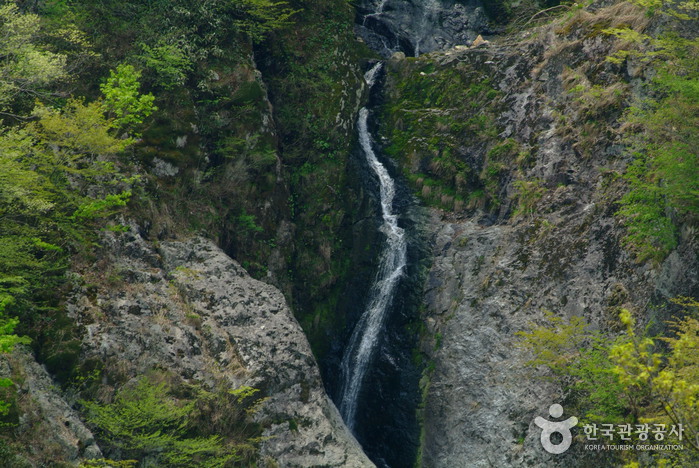
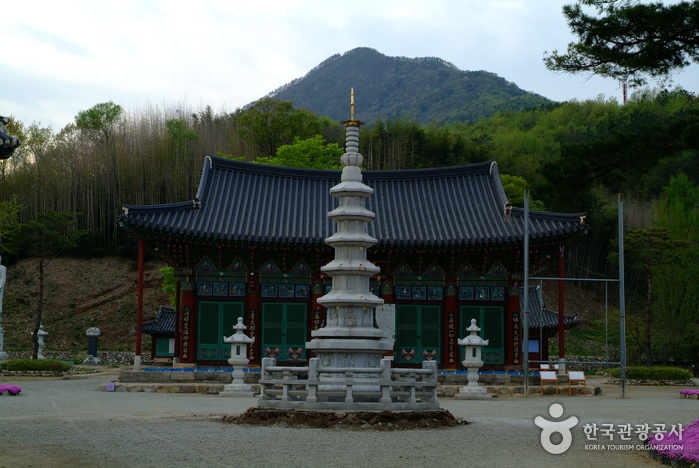
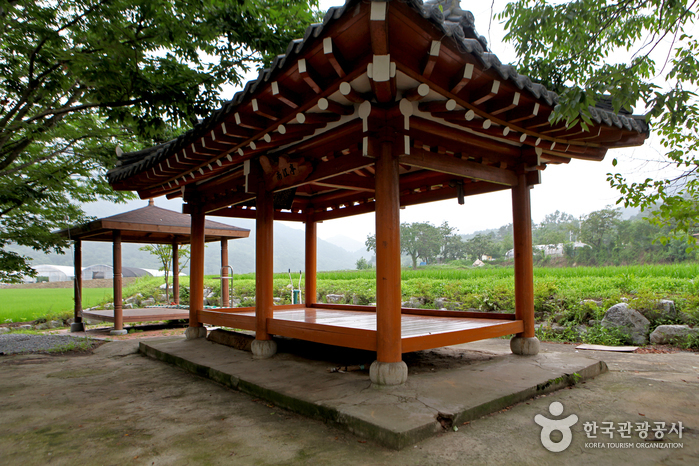
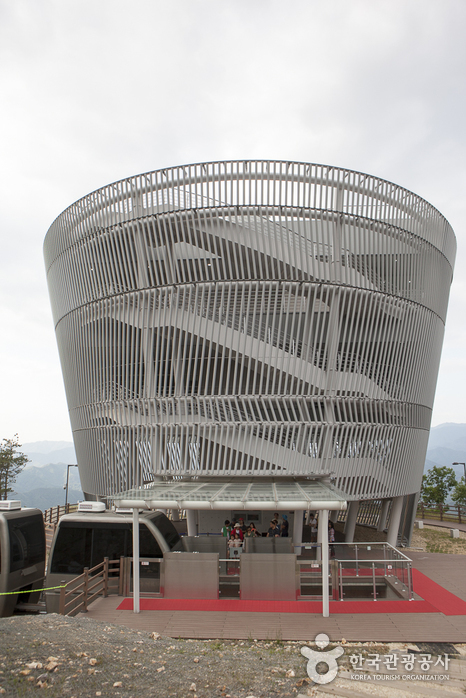
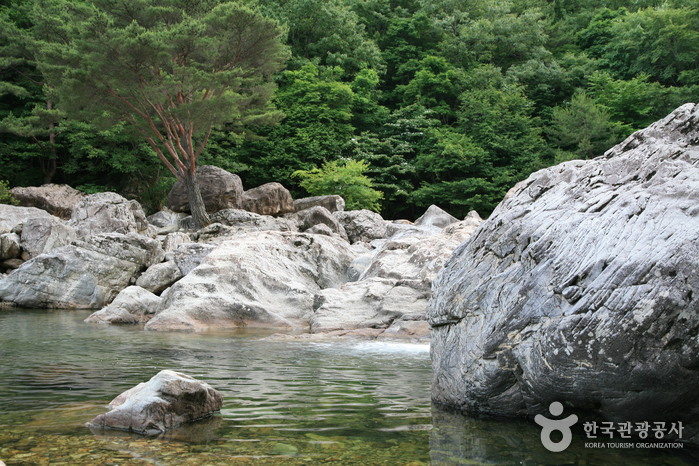
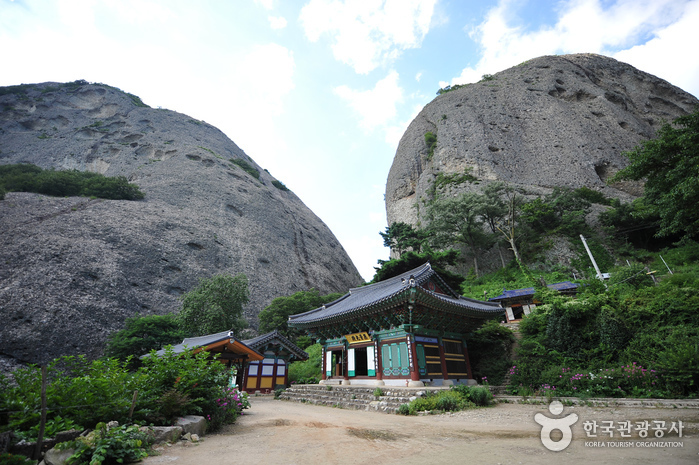
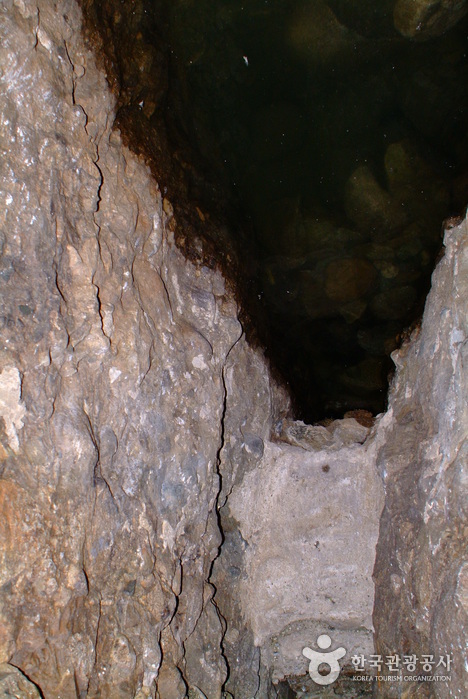
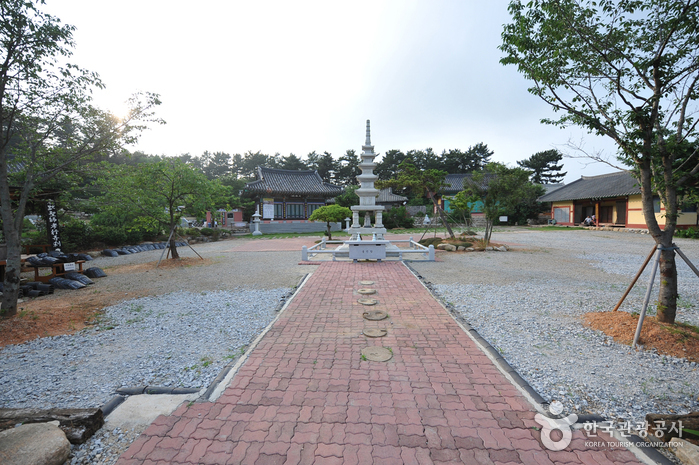

 English
English
 한국어
한국어 日本語
日本語 中文(简体)
中文(简体) Deutsch
Deutsch Français
Français Español
Español Русский
Русский